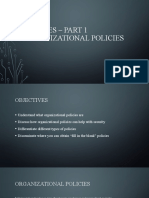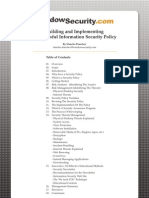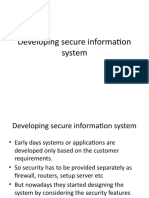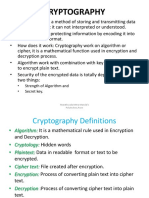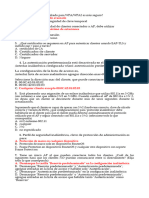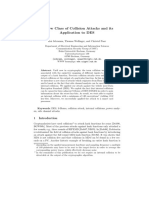0% found this document useful (0 votes)
3 views11 pagesCyber Security Unit - 4 Notes
Security policies are vital for organizations to protect sensitive information, ensure legal compliance, manage risks, and maintain consistency across departments. The document outlines the importance of developing security policies, the process for reviewing and updating them, and various types of policies such as email and corporate security policies. Additionally, it includes a case study of an e-commerce company, ShopSecure, highlighting the need for a comprehensive security policy after facing significant security challenges.
Uploaded by
soyboy2745705Copyright
© © All Rights Reserved
We take content rights seriously. If you suspect this is your content, claim it here.
Available Formats
Download as PDF, TXT or read online on Scribd
0% found this document useful (0 votes)
3 views11 pagesCyber Security Unit - 4 Notes
Security policies are vital for organizations to protect sensitive information, ensure legal compliance, manage risks, and maintain consistency across departments. The document outlines the importance of developing security policies, the process for reviewing and updating them, and various types of policies such as email and corporate security policies. Additionally, it includes a case study of an e-commerce company, ShopSecure, highlighting the need for a comprehensive security policy after facing significant security challenges.
Uploaded by
soyboy2745705Copyright
© © All Rights Reserved
We take content rights seriously. If you suspect this is your content, claim it here.
Available Formats
Download as PDF, TXT or read online on Scribd
/ 11
























